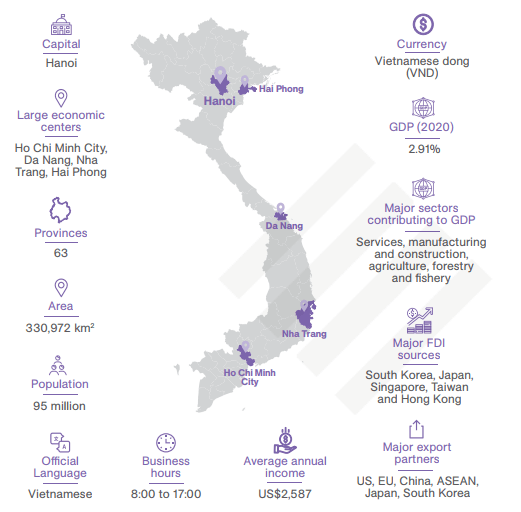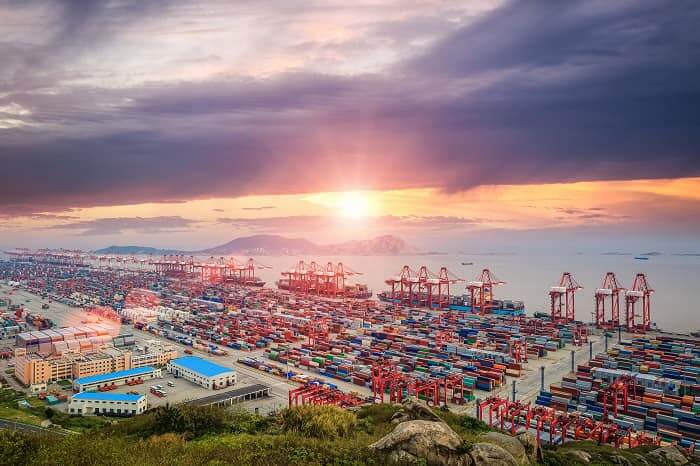Comprehensive guide to set up a factory in Vietnam 2021
Vietnam is one of the most attractive countries for investment in the world. And processing and manufacturing are among industries gaining foreign investment (FDI) the most. This is result is by strong support from Vietnamese government and the trend will not change in near future. Because of Vietnam’s stable political and business environment, low wages, and a growing economy, a lot of businesses (from US, EU, UK, China,…) choose this country to set up their factory in light of the US-China trade war and COVID-19.
Many foreign investors see Vietnam as top location for their relocation to reduce the depend on China manufacturing as well as unpredictable scenarios, such as trade shocks. Here below we highlight some steps you should follow to set up a factory or start business in Vietnam.

Some reference for investment in Vietnam
4 steps to start business in Vietnam
Vietnam is top destination for investment but it has a complex legal process for establishing a company. There are below some steps that companies should know before their begin in the country.
Step 1: Pre-investment approval
There are some type of industries/investment that are requested for Vietnamese authorities’ approval. As a result, investors should spend time to study Vietnam rules for investment and prepare equisite documentation and working against the application processing times.
Step 2: Application for Investment registration certificate
Every foreign investors must have Investment registration certificate called IRC. To apply for this certificate, you have to:
– Application for implementation of investment project (this should include details of the project in Vietnam);
– Proposal of investment project (should include the details of the investment project, including lease agreements or land use needs);
– Financial statements (to be provided for the last two years of a company’s operation; additional information may be required to prove financial capacity)
Step 3: Enterprise registration certificate application
The Enterprise Registration Certificate (ERC) is another docs needed for new businesses in Vietnam. ERC will be accompanied by a number that is also company tax number.
These below documents should be prepared for ERC:
– Application for enterprise registration;
– Company charter;
– Application for enterprise registration;
– Company charter.
Step 4: Complete licensing procedures
After receiving ERC and IRC, some below steps have to be completed:
– Seal carving;
– Bank account opening;
– Labor registration;
– Business license tax payment;
– Charter capital contribution;
– Public announcement of company establishment
Choosing location for your factory
Vietnam is diverse and investors should choose one of three district regions – the North, Center, and the South to set up new factory. Each region has it own strengths and weaknesses for considering
1. The North of Vietnam
In the North, capital Hanoi is center of gravity but the neighboring provinces, such as Bac Ninh, Bac Giang, Hung Yen, Hai Duong,… are much more popular for manufacturing. The advantage of this region is its proximity to China and is therefore well-positioned for China plus one manufacturers.
2. The Center of Vietnam
Danang is the largest city of this region. The region’s labor force is young and dynamic and benefits from quality educational institutions. Traditional courses predominantly focus on science, engineering, IT, and economics.
3. The South of Vietnam
The south is dynamic region for FDI of Vietnam. Ho Chi Minh is the economic hub of the country and has a flourishing middle class with increasing consumption. Besides to Ho Chi Minh, labor is concentrated in large industrial clusters like Binh Duong, Dong Nai, Vung Tau, …
In conclusion, what are advices for investors ?
Sometimes, it is not necessary for an investor to build their own factory. They can use sourcing/contract manufacturing instead. And if own factory is in need, greenfield or M&A must be proceeded. Here below are some advices:
– You should visit multiple industrial zones as they can vary in quality and incentives.
– Investors should have a comparative matrix for labor, land cost, supply chain depth, infrastructure quality, cost of utilities as well as tax and non-financial incentives
– Investors should be ready for Vietnam’s rules and practices. They should find an agent for customs, legal procedures,… It is very important as investors sometimes run into trouble with government authorities due to inadequate licenses and procedures.



